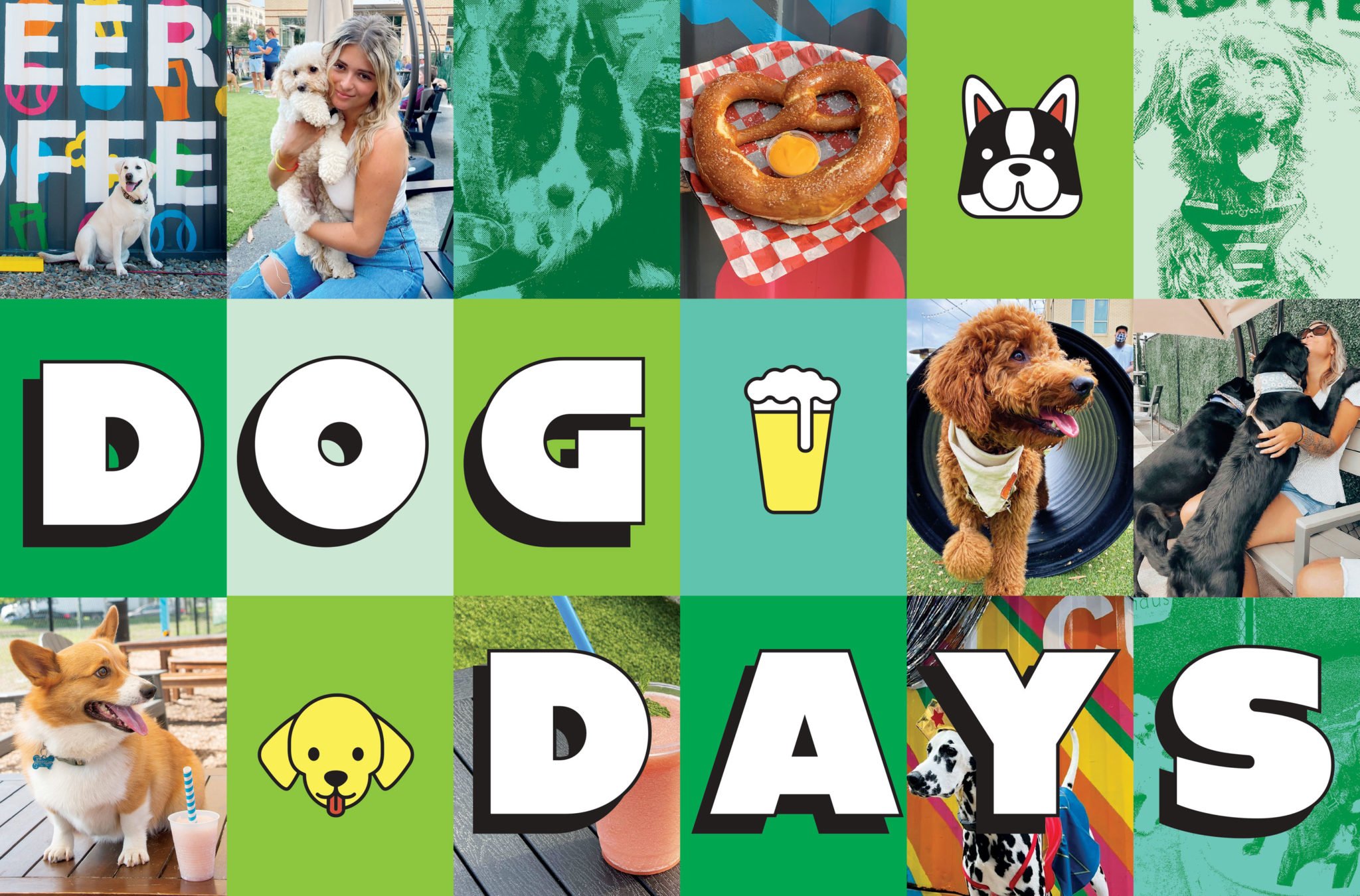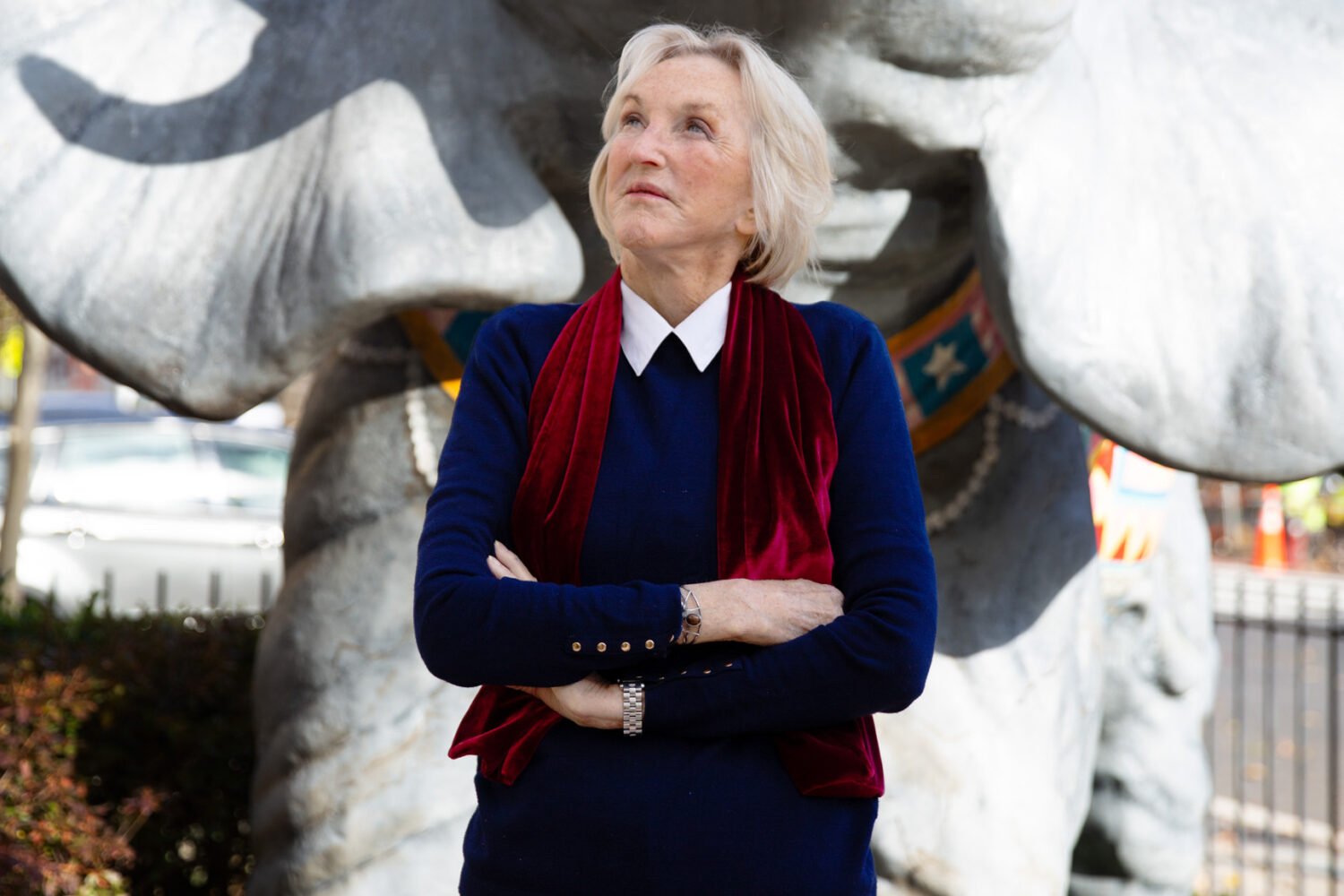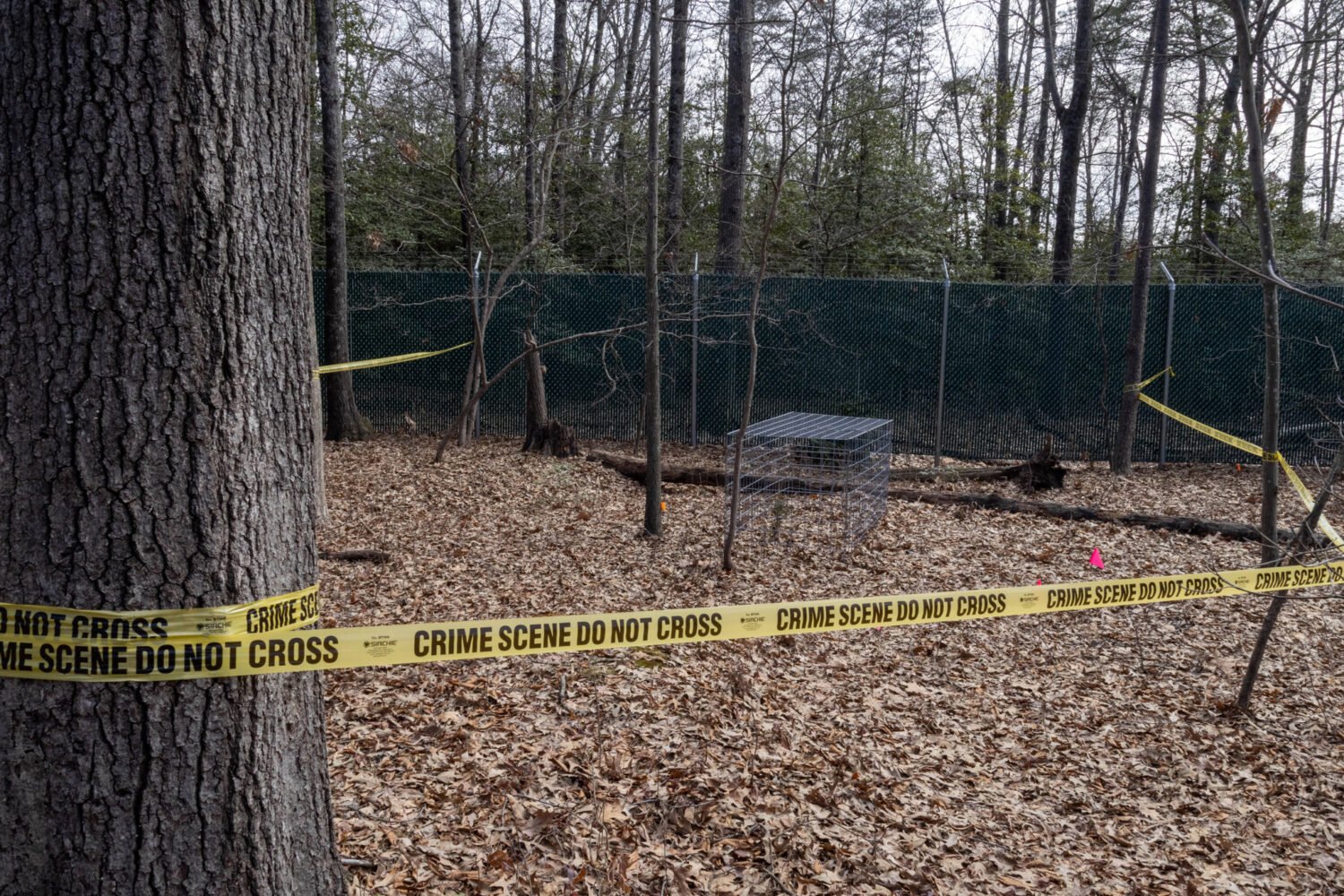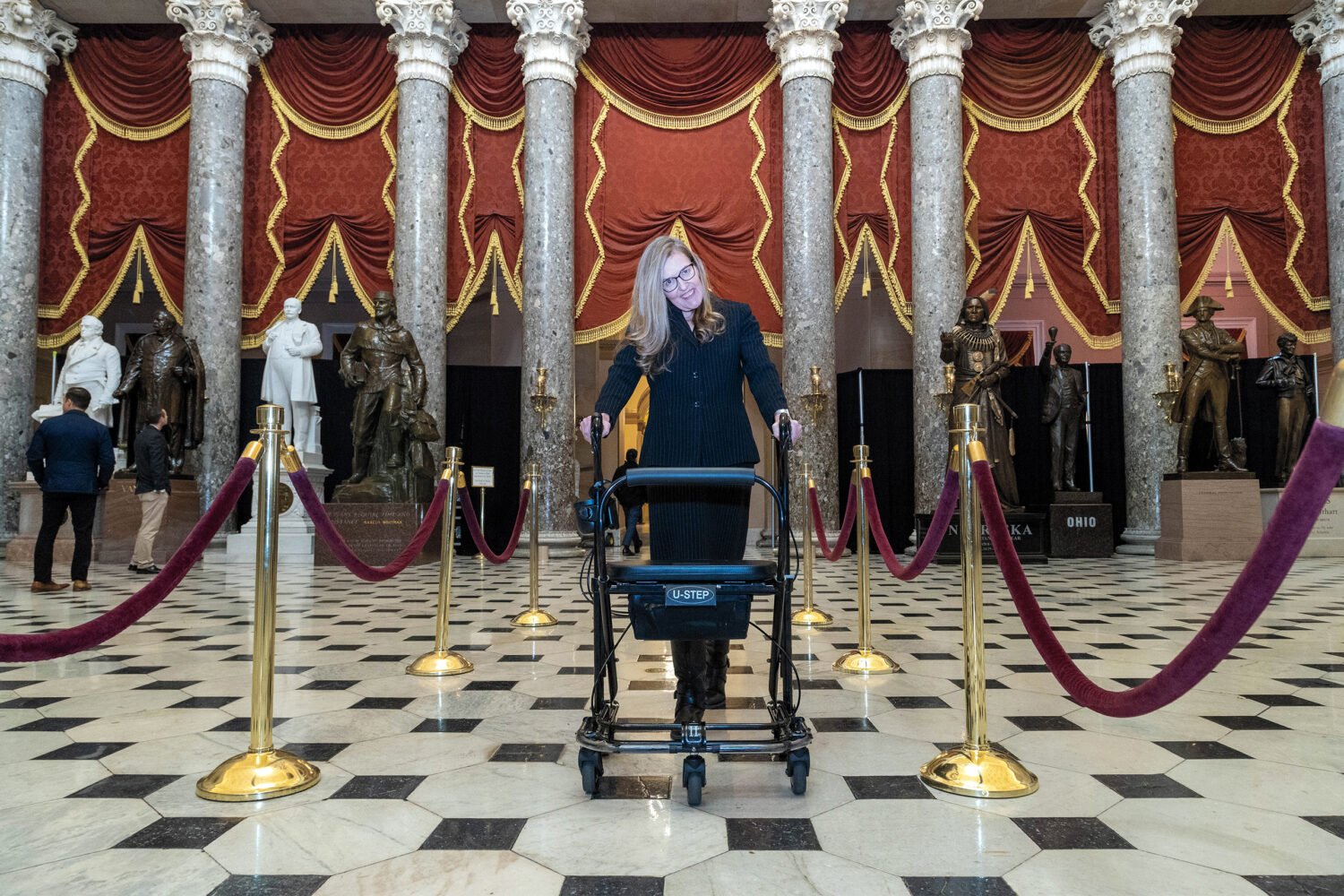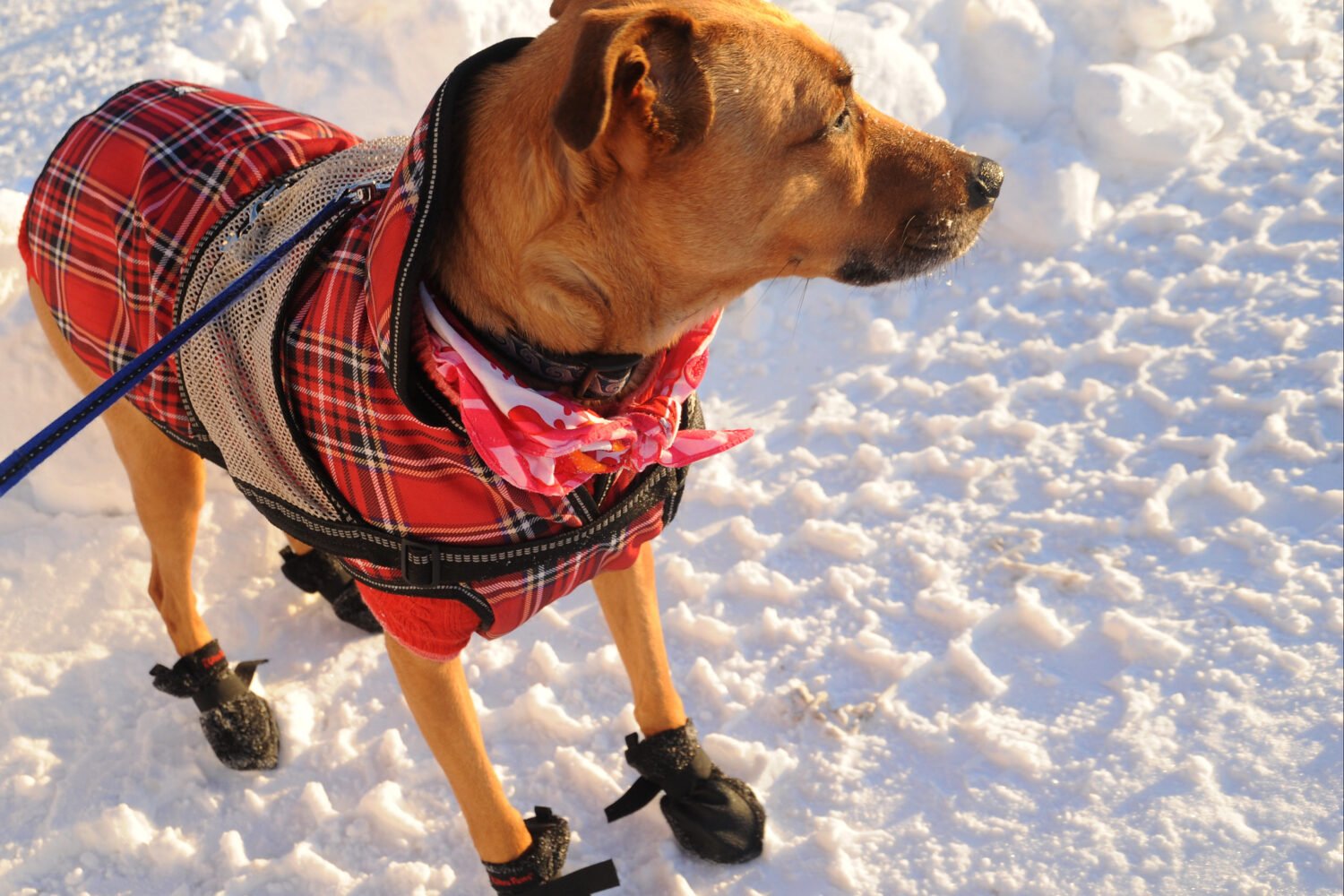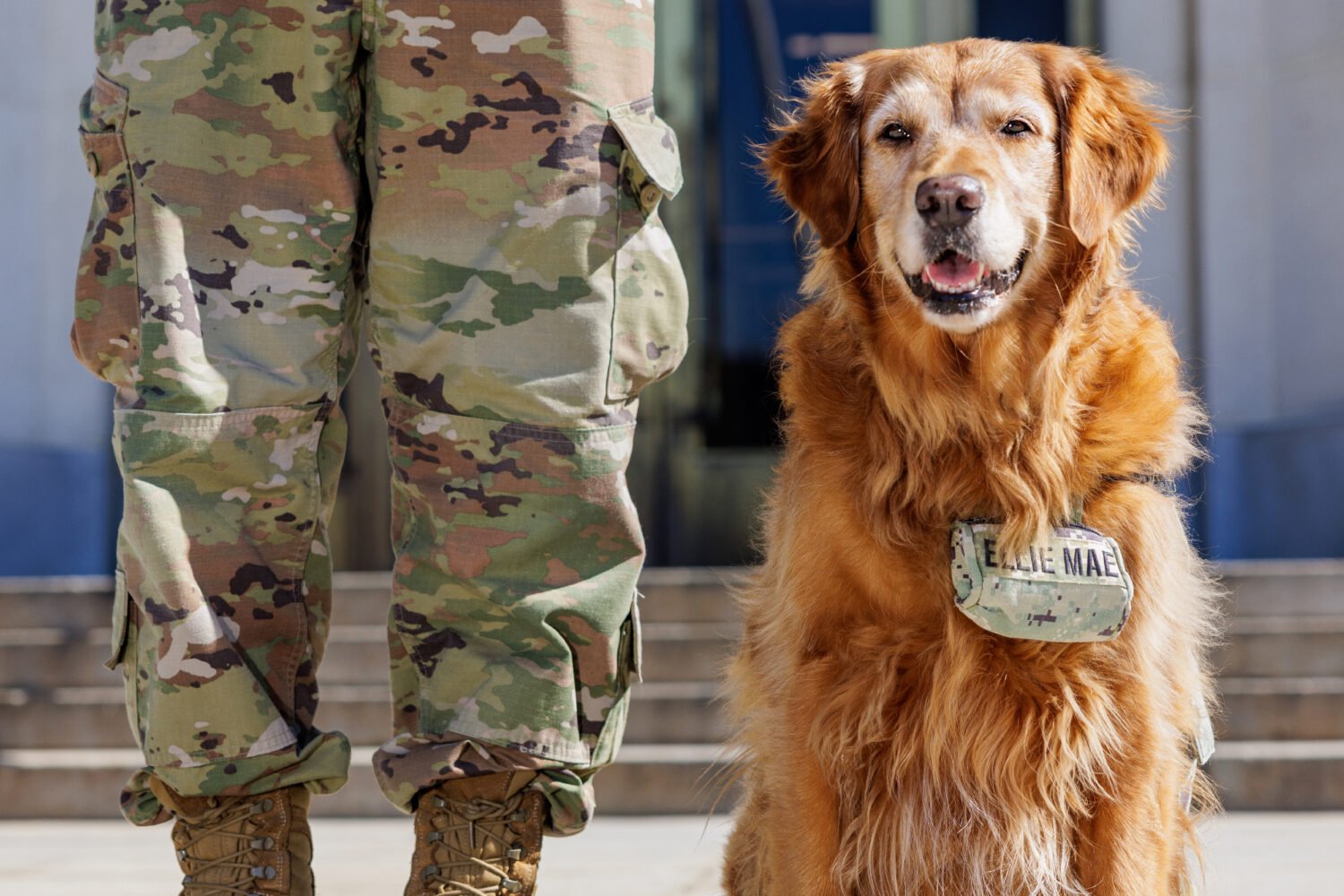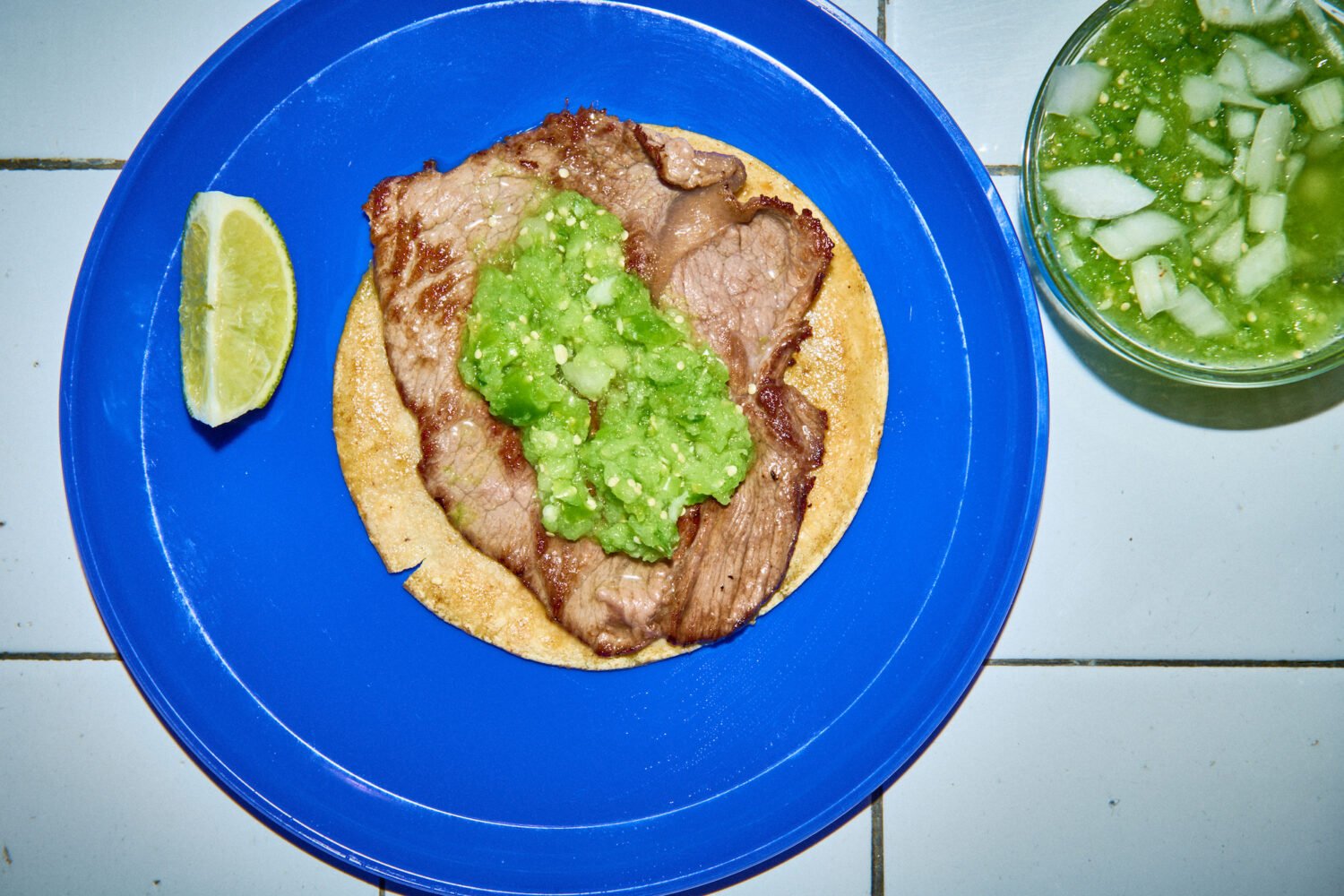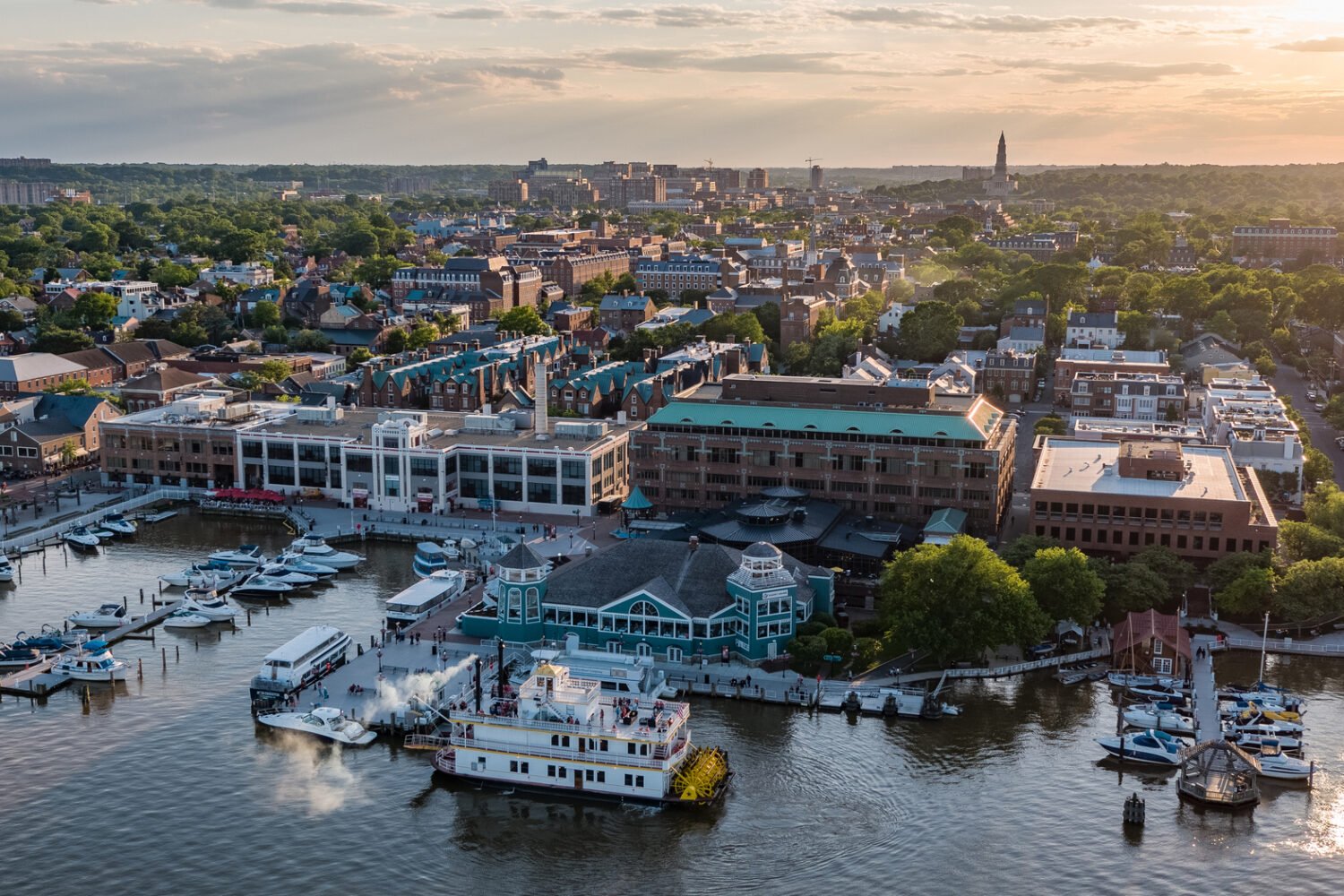It wasn’t even a question: They were going to need bottle service.
This was Onyx’s birthday. A very special occasion. All his friends were going to be there. Plus, they had to make up for last year, when they couldn’t celebrate at all because everybody was on lockdown. So even though it was an extra $80 and even though it was, well, extra, it was also a no-brainer to splurge just a little so that, as the Baha Men’s “Who Let the Dogs Out?” came blasting through the speakers, a Bark Social employee dressed in a hound-dog onesie—like a mascot, or a furry—would burst through the entrance of the covered patio area where Onyx’s party was taking place, dance with the unreserved enthusiasm of a sorority girl on spring break, and spray Champagne all over the proceedings.
This is probably as good a time as any to mention that Onyx is a labradoodle. For his owner, Gabrielle Mizerak, the event for her pandemic puppy fulfilled her every wish. Wearing a shiny gold paper crown and sipping a blueberry-flavored hard seltzer, Mizerak declared that the Champagne spray was “100 percent” worth the cost (it came with a bottle to drink, too), as was the entire afternoon’s festivities. “I just threw an extensive birthday party for my two-year-old dog,” she said. “And I wouldn’t want it any other way.”
There are two types of people reading this article: those who think everything described above is absolutely ridiculous and those who think it’s absolutely amazing. Fortunately for the brains behind Bark Social, the latter contingent is a sizable one. Business in the dog-bar scene is booming.
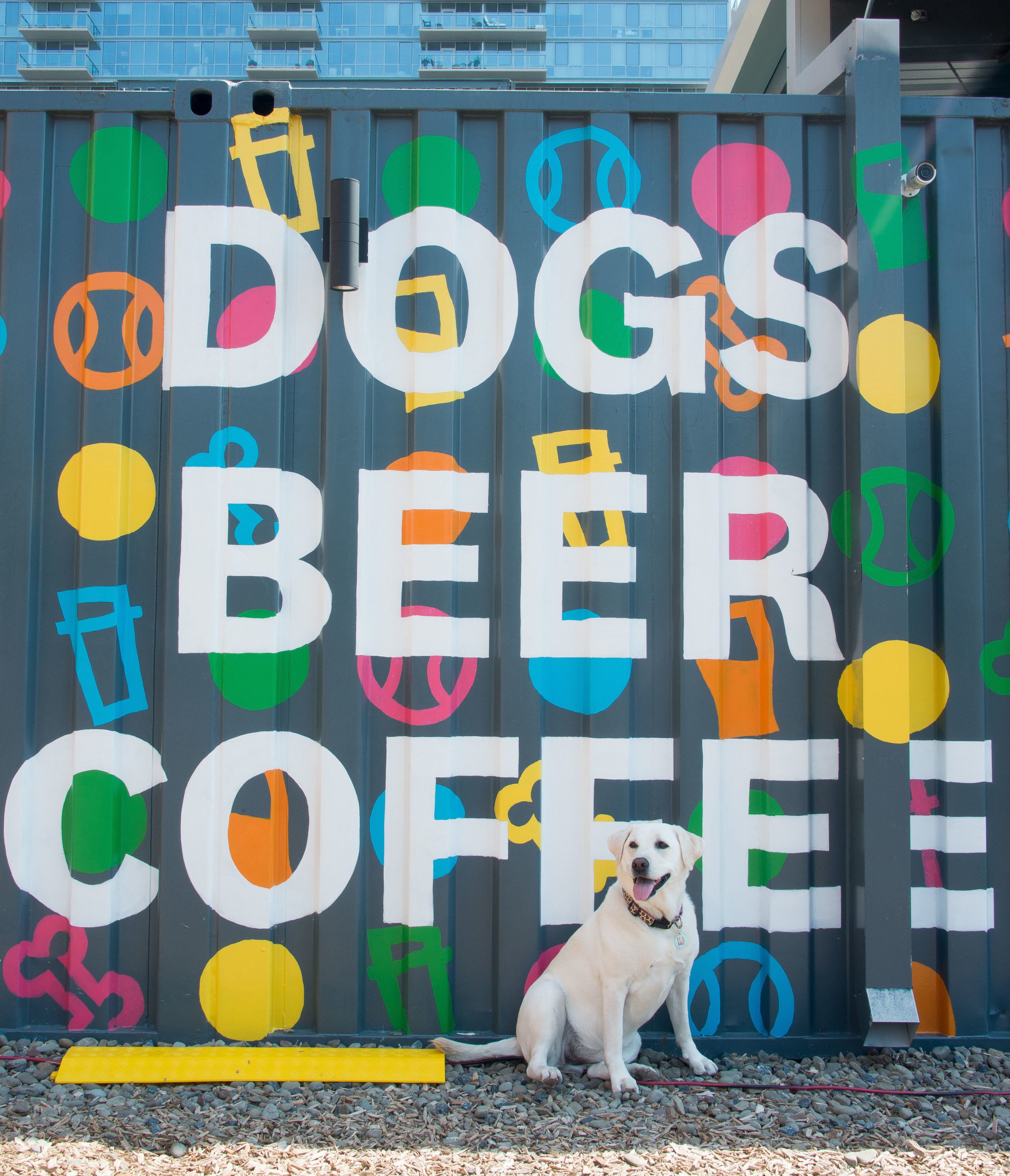
A dog bar, as the name suggests, is a hybrid of a dog park and a beer garden; variations are plentiful, with bare-bones (if you don’t like dog puns, you should probably just tap out now) types offering little more than the average dog park and full-service operations providing everything a dog and its human companions could hope to find at a social establishment. The 25,000-square-foot space that Bark Social occupies in North Bethesda consists of a leash-free dog park with a fenced area for smaller animals, all of which is monitored by “Bark Rangers,” who clean up after the pups and break up any dogfights; a bar serving everything from White Claw to local IPAs on tap; a cafe with coffee and food for people, plus “pupsicles” and other treats for dogs; a retail shop situated inside a shipping container and mostly selling merch emblazoned with the tagline DOGS. BEER. COFFEE.; and a coworking space/indoor lounge where the music is low, the TVs are big, and the wi-fi is included.
Bark Social opened in late February last year, about four months after Barkhaus—a smaller setup with on- and off-leash areas and a full restaurant—debuted in Alexandria. A third entrant into the category, Snouts & Stouts, hopes to open in Alexandria’s West End by summer.
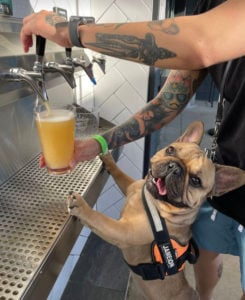
Bark Social and Snouts & Stouts share a price point: about $365 for an annual membership, $40 or so for a monthly membership, and day passes that cost $10 on weekdays and $15 on weekends. (According to its website, Snouts & Stouts also plans to offer doggie daycare.) Barkhaus is a bit less expensive: Yearly memberships are $250, monthly memberships $30, and day passes $10 every day of the week. Dog lovers without dogs can enter all three for free. All animals have to provide proof of vaccination. (Humans do not.)
With their cutesy branding and whimsical offerings—including, at Bark Social, Good Boy beer for your dogs in flavors like “Mailman Malt Licker” and “Session . . . Squirrel”—these spots can sound extremely silly. But the joke’s on anyone who thinks dog bars aren’t a solid investment. Both Barkhaus and Bark Social are in expansion mode. Alex Benbassat, Barkhaus’s cofounder, says he and his business partner are looking to open at least one new location, eyeing Falls Church and Richmond as well as North Carolina. And Bark Social, which is launching a Baltimore outpost this spring, just closed a new financing round of $2 million. (Total funding since last year: $5.3 million.) In February, Bark Social announced plans to open new locations in DC, Philadelphia, Northern Virginia, Richmond, Charlottesville, Pittsburgh, and North Jersey “within the next few years,” with real-estate negotiations underway in Southern California and Southeast Florida as well.
A dog bar, as the name suggests, is a hybrid of a dog park and a beer garden.
Bark Social is the leader in this growing market, which sounds like pure, unadulterated millennial-bait but in fact appeals to a wide cross-section of modern dog owners. It turns out there’s quite the appetite for a dog-park alternative that’s more lawful and supervised, not to mention comfortable, than the public options. Besides, we’ve already accepted some blurring of boundaries in all other parts of our lives: offices in our living rooms, phones in our beds. Why should a dog park only be a dog park, with nowhere to sit or drink or (if you’re a person) use the bathroom? Why should you have to choose between tending to your puppy or spending Friday night out with your friends while your dog stays home alone? Why can’t all these disparate entities combine, Voltron-style, into something that meets a battery of needs for people and their pets? Who says you—and your dog—can’t have it all?
In 2018, Luke Silverman was living in Austin, Texas; flying back and forth to grad school at the University of Michigan and working in marketing for a large medical-device company (a job he didn’t really like); and just generally having what he now describes as a “quarter-life-crisis, what-am-I-doing-with-my-life type thing.” He stayed in school, graduating with his MBA the following year, but quit his job. He didn’t really know what he wanted to do next but started passing his days with his pit-bull/black-Lab mix, Frankie, at a dog bar and thought: Why couldn’t I make something like this, too?
He enlisted his cousin-in-law Jeff Kurtzman, an investment banker who had cofounded a bunch of companies and nonprofits, including the community-minded online bookseller Better World Books and the nonprofit Operation Incubation, which sent infant incubators to developing countries. Kurtzman, who lives in Severna Park, was intrigued by Silverman’s pitch. Central to the concept was the idea of building a “social club,” Silverman says, with a strong community aspect: “You could have a normal, everyday thing—an event, a hangout—and the only thing [that would be] different is that you can bring your dog, and your dog could be off-leash and just have fun while you’re having fun.”
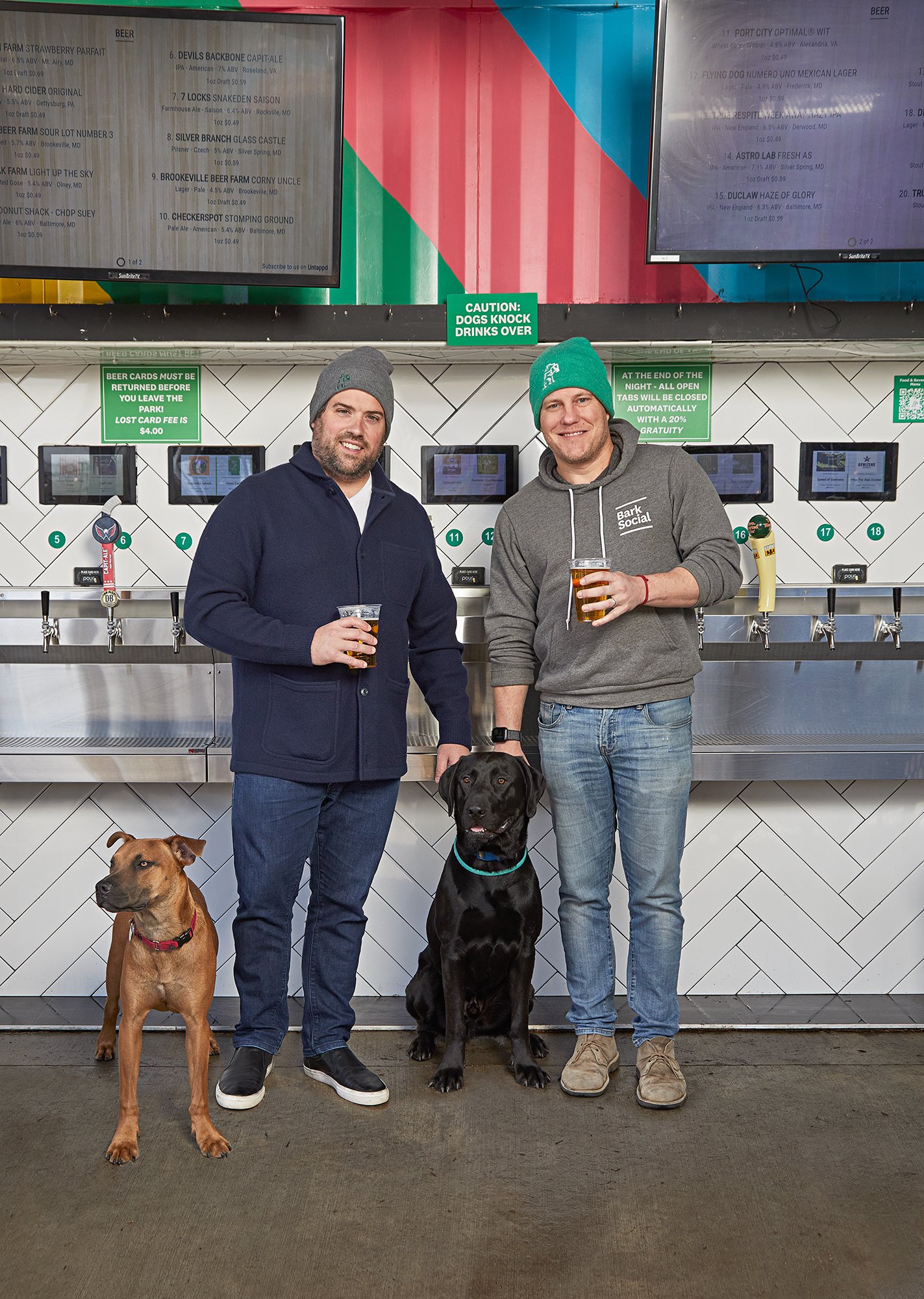
Together, they spent two years researching dog bars across the country. “We treated it almost like a case study in business school,” Silverman says, taking “a very analytical approach to this market that was kind of in its infancy.” At the time, Kurtzman estimates, there were about 15 dog bars in the country. Now he puts the total at about 60.
Though Silverman and Kurtzman believed the dog-bar concept had a lot of potential, they felt its execution left much to be desired. In those early days, Kurtzman says, “most people would describe [the dog bar] as a dirt patch with an Airstream trailer or a shipping container or a shed serving canned beer, with plastic chairs that you could buy at Walmart for $2. No shade, no TVs, no wi-fi. It was very basic. And we thought, like, wow, there’s an opportunity here to not necessarily make it the Mercedes of dog bars but just to take it up a notch.”
Silverman and Kurtzman zhuzhed up the aesthetics. At Bark Social, strings of Edison bulbs are draped above the park, there are Polywood Adirondack chairs, and the decor is as bright as Starburst candy—the same cheery color scheme as the new mural painted on the west side of the Pike & Rose parking garage, which serves as the park’s backdrop.
“You don’t have to worry about where your dog is going, and you can just trust that your dog is okay.”
They wooed some investors and decided to launch in the Washington area, choosing it for its “recession-proof” reputation, Silverman says. Original name contenders included Central Bark (deemed too New Yorky for a Washington establishment) and &Dogs (you know, like &Pizza) before they landed on the name they felt best summed up the energy they were going for—plus, it wasn’t already copyrighted, which apparently set it apart from just about everything else in the dog space. They followed through on their vision to use their space for community-oriented gatherings: They host adoption events with local rescues, movie and trivia nights, and breed-specific meetups (in March, there were dates for basset hounds, English bulldogs, “gentle giants,” and “dogs below four inches to the ground”).
Though Silverman and Kurtzman’s plans predated Covid, Bark Social arrived at an opportune time: amid a pandemic-sparked puppy boom and months before the widespread availability of vaccines, when many people were desperate for safe outdoor places to socialize. The dog bar was a hit. A year after opening, Bark Social put its guest total at “more than 5,000 furry and human visitors” a week.
Meanwhile, the Barkhaus team says they have at least 500 members, close to half of whom are annual members who have already renewed for a second year. “It’s been constant growth since we’ve opened,” says cofounder Justin LeGore. Barkhaus also regularly hosts adoption events as well as themed holiday parties, such as “Pal-entine’s Day,” and crowns a “dog of the month” who receives a dedicated Instagram post complete with an in-depth bio written by Barkhaus staff.
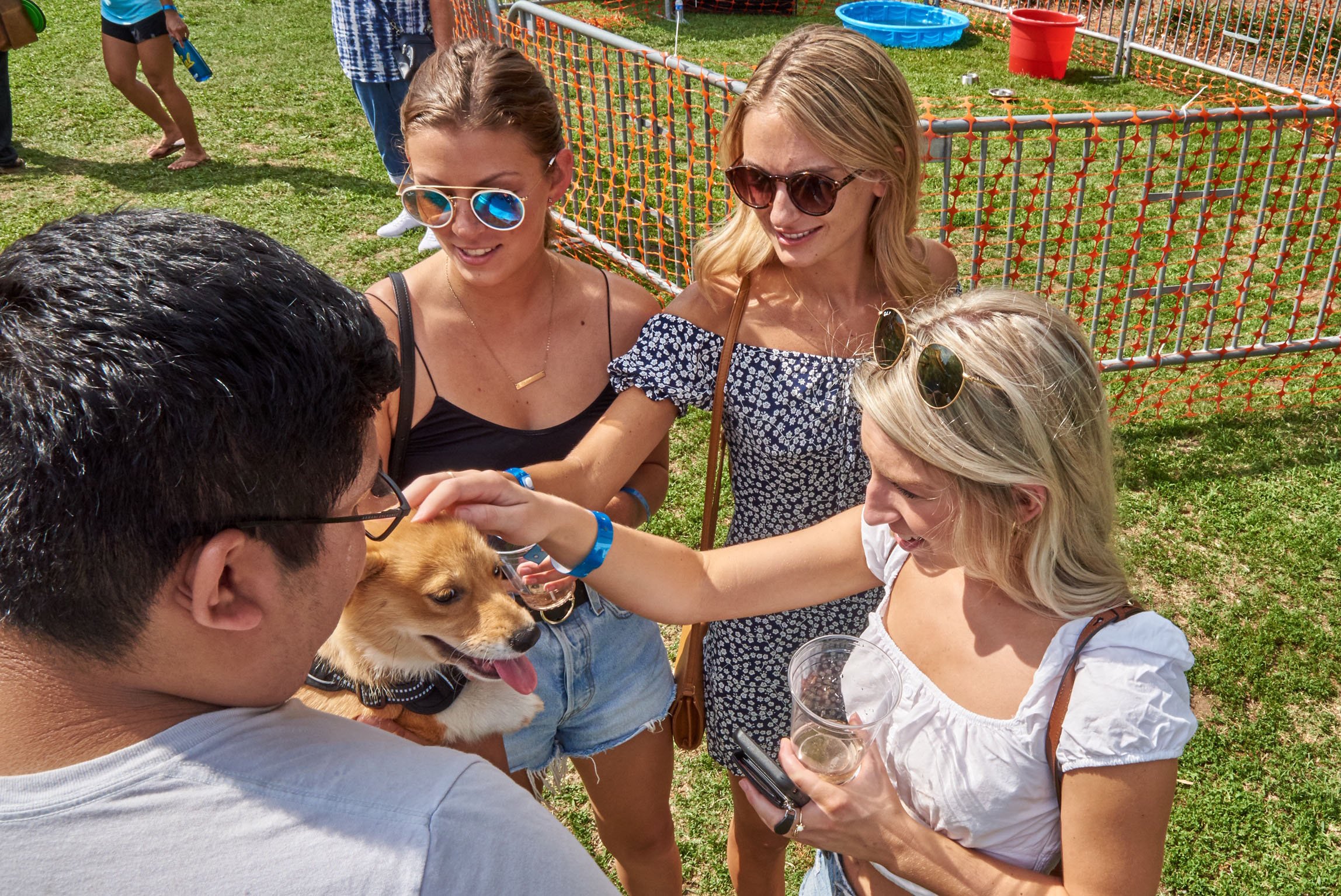
Silverman and Kurtzman wouldn’t divulge how many members they have or where they make most of their revenue, but it seems safe to assume memberships aren’t the biggest piece of the pie. On the day of Onyx’s birthday party, a brisk Saturday afternoon in February, Bark Social was packed, but most of the visitors who spoke to Washingtonian were there on day passes. Only one, Claire Dufek, was an annual member, and she said she lives “one-tenth of a mile away.” (She brings her dog, Teddy, every day.) Unless you live within walking distance, it’s likely hard to justify a membership—especially because you have to pay for parking if you’re there more than two hours.
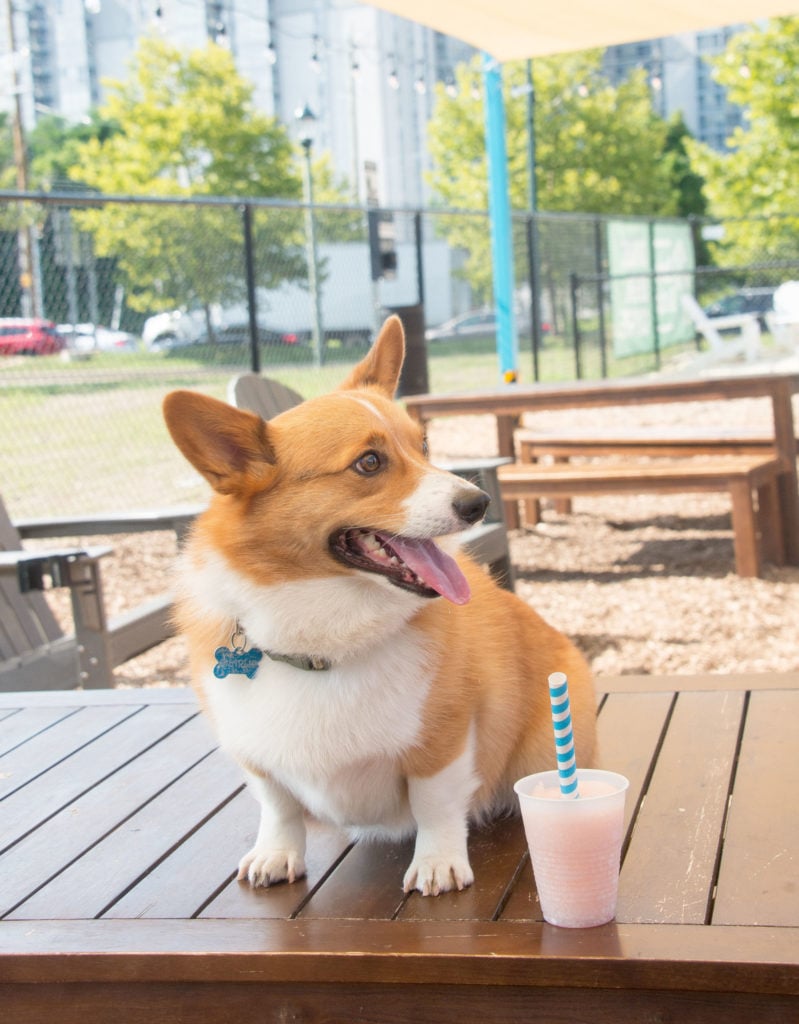
But virtually everyone was down for repeat visits on day passes, relishing what was frequently cited as the biggest perk of the setup: the professional staff on hand to supervise, clean up after dogs, and intervene when the roughhousing got too rough. While dog parks require the vigilance of dog parents, “you don’t have to actively monitor your dog” at Bark Social, said Miles Davis as his English setter, Shuri, made happy loops around the park. Madison Tucker (with Sammie the Westie) agreed: “You don’t have to worry about where your dog is going, and you can just trust that your dog is okay.” Some prior Bark Social guests disagree, however, and have expressed as much in their online reviews, complaining about visitors who bring aggressive animals and get too drunk to monitor them properly and decrying what they say is “an accident waiting to happen.” (Bark Social’s comment on the matter: “Bark Rangers ensure safety, pick up after your pup, and of course provide a good time for your pup. Unless your dog is enrolled in Bark Social’s dogsitting from 8 am to 4 pm Monday through Friday, members cannot just fully rely on Bark Rangers to supervise their pups!”)
Thalia Eigen and Andy Donohoe said they come to the park “every two weeks or so—which is kind of a lot,” Eigen acknowledged, “for not having a dog.”
The couple’s lifestyle (small apartment, frequent travel) isn’t conducive to dog ownership, but they both just really like to be around dogs and enjoy a beer. As Donohoe put it, “You can’t go to a dog park without a dog.”
Once, dogs did not need to be supervised at all times by their human companions or professional Bark Rangers or the kindly employees at a doggie daycare because at one time, dogs were wolves, and wolves, as a rule, are content to take care of themselves. But that was long ago. A recently discovered Siberian-wolf bone points to the first occurrence of canine domestication as anywhere from 27,000 to 40,000 years ago, though others place this turning point even further back, 60,000 years before that, and at least one study argues that dogs were domesticated more than once. Many say wolves were first drawn to human camps like a golden retriever to the sloppiest eater at the dinner table, angling for scraps of food. The friendliest of those wolves began traveling with then-nomadic humans. Evolution did its thing, making successive generations cuter and cuddlier—smaller skulls and teeth, floppier ears, sweeter temperaments—until those wolves became the dogs people recognize and adore now.
“Dogs in DC are a mix of best friend and child. People want to go everywhere with them.”
Dog ownership in the US skyrocketed around 1998; 20 years later, the American Veterinary Medical Association reported that about 38.4 percent of American households had at least one dog. The canine culture of today—Pomeranians in purses, havapoos in Halloween costumes, corgis on clomipramine—is a relatively recent development, one you’ve surely noticed with every stroll down the sidewalk or scroll through Instagram. The joke goes that dogs are the new kids (and plants are the new dogs, and candles are the new plants, but those are developments for another article). Dogs are stars of the holiday card, the centerpiece of the dating-app profile. Charlie Brown would probably get canceled today for letting Snoopy spend the night in (or on) a doghouse: A 2020 survey found that nearly 75 percent of dog owners invite their pets onto their couches and into their beds. And all dog owners, it seems, love to spoil their four-legged companions: By 2017, they were spending nearly $70 billion annually on them, according to the American Pet Products Association.
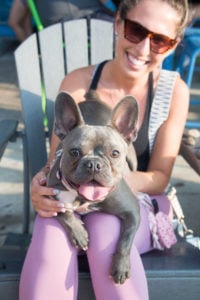
“Dogs in DC are a mix of their best friend and their child,” says Lyssa McEachern, District Dogs’ business-development manager. “People want to go everywhere in the city with them and have adventures with them.”
District Dogs has several outposts across DC (it plans to open additional locations in Clarendon and the newly rebranded National Landing) and offers daycare, boarding, training, and grooming. When McEachern joined the company three years ago, she started throwing “yappy hours” at local businesses, where dogs can sip doggie beer (bone broth in a growler) and “puppuccinos” (whipped cream garnished with tiny treats) while their owners imbibe and mingle.
McEachern was expecting the crowd at these events to consist mostly of her millennial peers. “But the more I’ve done these yappy hours, the more I’ve seen people of all ages coming and having as much fun as everybody else,” she says. “I think people are just opening their hearts to the idea of dogs more than they used to, [when the thinking was] they’re meant for guard dogs or they’re meant for being on a farm, or for watching the house or just as a family dog. Now it’s like people want to fill their time [with their dogs].”
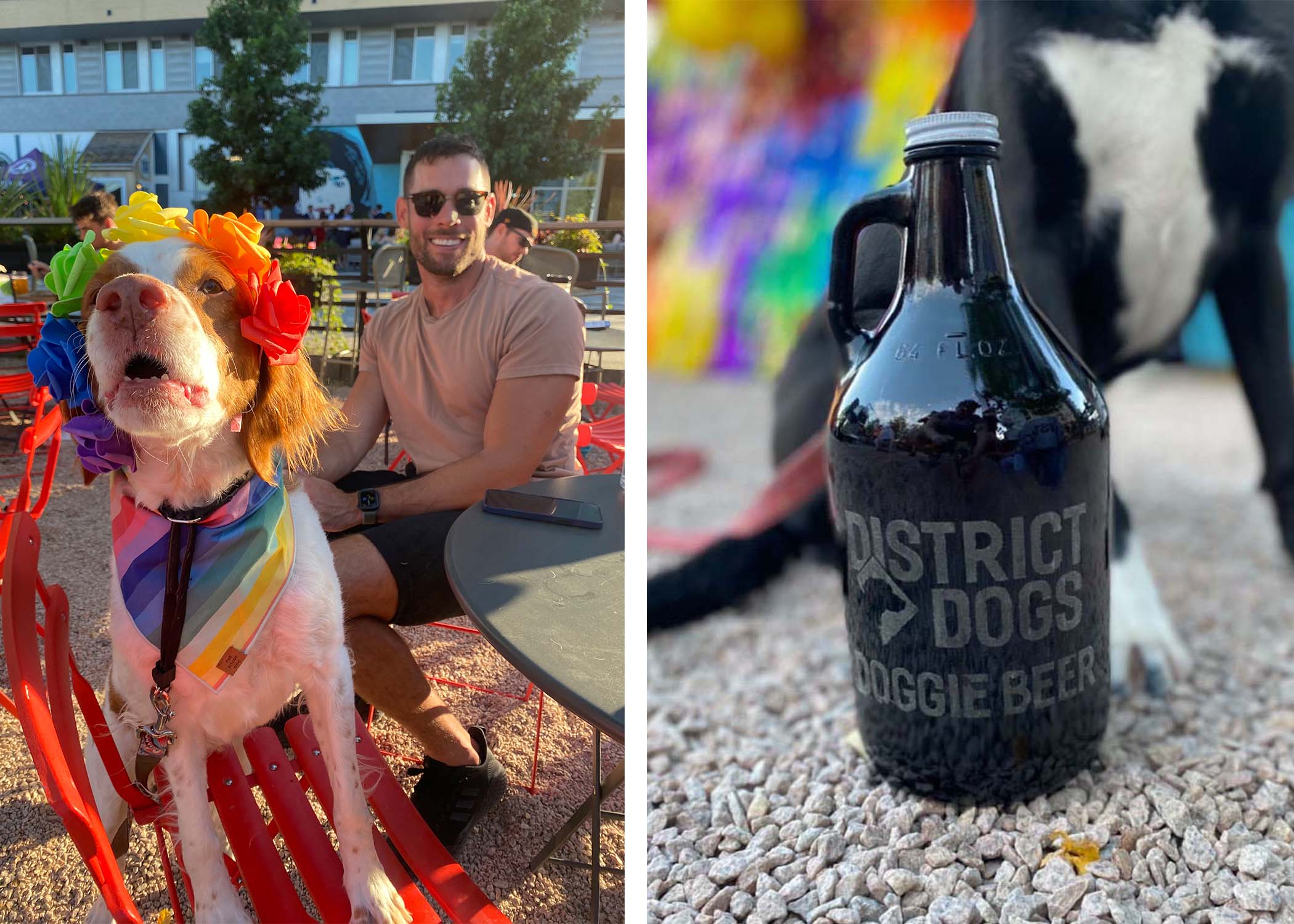
During the pandemic, McEachern says, District Dogs saw a massive influx in reservations: Training skyrocketed from four or five classes a week to 20, daycare increased by 30 percent, grooming by 50 percent. As we now move, in fits and starts, toward a reopened world, new dog owners who have grown accustomed to working and playing with their pets at their side are loath to give up that intimacy.
McEachern wholeheartedly endorses the rise of dog bars: “I highly encourage and welcome anything that is over the top for your dog.” She’s also pleased to see how many spaces in the Washington area welcome dogs (and it’s not just bars and restaurants with patios; District Dogs recently hosted an event with Framebridge, the custom-framing shop), which she hopes eliminates a barrier to entry for people who want pets but are worried about what they’ll do to their social lives. “[If you think,] Hey I really like to go out and party with my friends, I really like to do yoga—can I do these things with my dog? You can.”
At the same time, she says, dog owners do their pets no favors by failing to foster independence—much as helicopter parents stunt the growth of their human children. “It is totally normal and healthy for [dogs] to stay at home for a night or just get that space away from what I call the ‘paw-rents,’ ” McEachern says. Dogs who don’t learn to be at peace on their own “will get destructive and cry all day,” she says, and if owners don’t correct this behavior, “it’s only going to get worse and worse.”
People with puppies tend to think that they’re abandoning their new best friend every time they leave the house. McEachern is firm on this: “You do not have to bring them everywhere.”
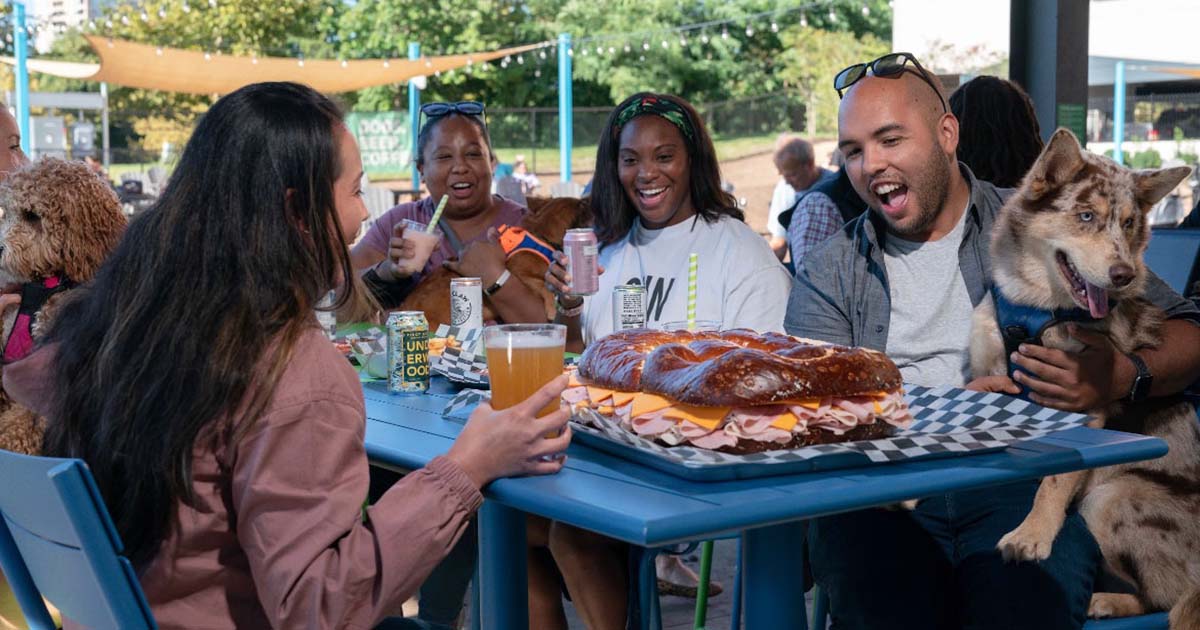
In fact, some states would perhaps prefer you left them at home: Alex Benbassat revealed that the trickiest part of Barkhaus’s opening was charming the health department, which does not want dogs in restaurants. But because Virginia is an ABC (Alcoholic Beverage Control) state, Barkhaus couldn’t serve alcohol without also serving food—and it had to be its own, on-premises food, not from a food truck. This, he says, is also the key behind the owners’ expansion efforts, as they’re working around typical ordinances that don’t allow dogs in restaurants. (Benbassat suspects Snouts & Stouts is struggling to get the variance it needs to open, hence the delay. Snouts & Stouts’ owners were not available for comment.)
For Bark Social’s part, the founders are envisioning some changes with their new locations, including a “bigger, better, and more immersive retail experience,” Silverman says, for which they’ve employed designers from Target, Anthropologie, and Nordstrom.
Depending on where Bark Social’s DC outpost lands, Mizerak (and Onyx) can already see herself becoming a member: “We always say if this was a little bit closer, we’d be here all the time.”
Claire Dufek, who has been going to Bark Social daily since becoming a member in December, thinks joining the community when you live in the neighborhood was “a no-brainer.”
“I just think it’s an amazing idea,” she says. “And I’m jealous I didn’t think of it first.”
This article appears in the May 2022 issue of Washingtonian.
